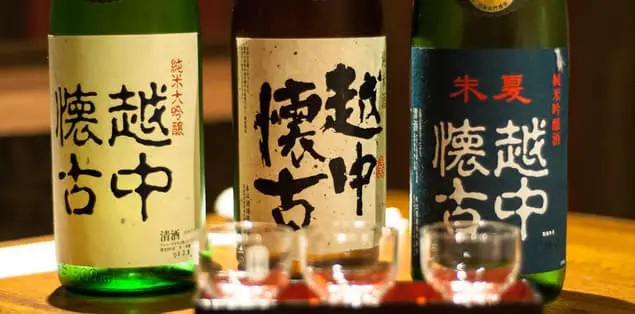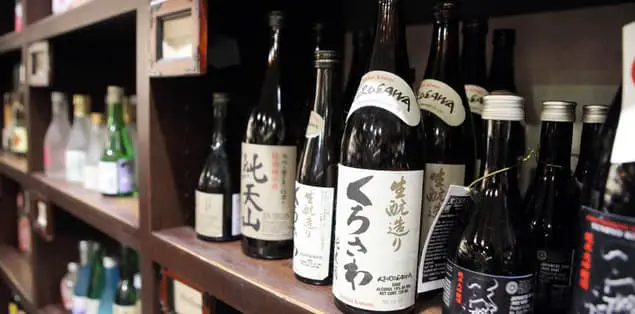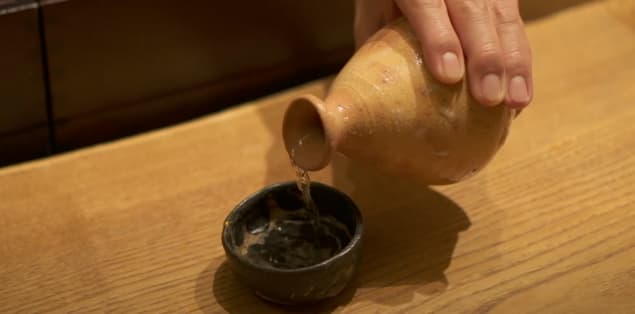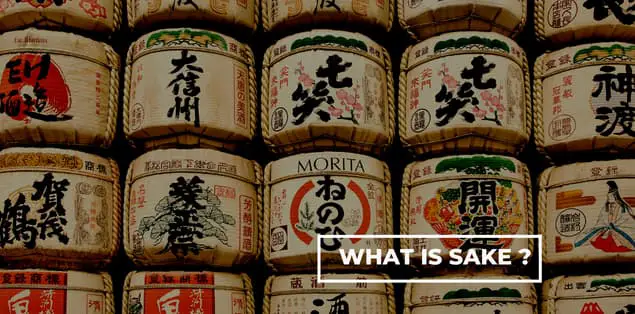The world of sake, known as Japan’s national beverage, is expansive and exciting. Be adventurous and try new brews and brewpubs from all around the world. At first, it may seem not easy to become knowledgeable about the many types of sake and the characteristics that set each one apart.
It is worthwhile to familiarize oneself with the spirit given the widespread popularity of sake and many establishments, including pubs and restaurants, that are devoted to the pleasure of sake. The following is a comprehensive guide to all you need to know about sake.
What Is Sake?

Rice, water, koji (rice that has been steamed and infected with the fungus Aspergillus oryzae), and yeast are the primary components used to produce sake. Some kinds of high-quality sake also include a trace quantity of brewer’s alcohol that makers subject to distillation. Sake is made like a beer but sips like wine. Ordinary sake is also called rice wine.
The center of each grain of sake rice contains a significant amount of starch, which gives the rice its signature appearance. Manufacturers use more than one hundred different types of rice to manufacture sake. Nevertheless, the cultivation of the three primary varieties—Yamada Nishiki, Gohyaku Mangoku, and Miyama Nishiki—constitutes around 75 percent of all sake rice output.
The first step in the manufacturing process is polishing the rice, which reveals the starchy, white center of the rice grain. Highly polished rice often produces cleaner, more delicate, and fruitier sake. Lipids and proteins in the rice’s outer layers may produce a foul taste during fermentation.
To manufacture koji, makers must prepare a vital component over two days. Rice must first be rinsed, allowed to soak, and then steamed. Enzymes are released while the mold grows on the grains, causing the starch molecules to break down into sugars. To begin the process, the fungus ‘Aspergillus oryzae’ spores are sprinkled over the rice. After the koji is complete, makers place it in a small tank that combines it with water, plain steamed rice, and koji to produce a yeast starter.
Then they move the yeast starter to a bigger tank, and then over the next week, three separate portions of steamed rice and water are added to the tank at various times. They put the bubbling mash through a fermentation process at temperatures closer to room temperature for up to four weeks. After the fermentation process finishes, they press the sake to remove the lees resulting from the fermentation process. Only then is the sake ready to be bottled.
Grades Of Sake

We may break down sake into many categories based on the methods of manufacture or the components that go into it. For example, the rice polishing ratio, sometimes called seimaibuai, differentiates the different categories of premium sake. An 80 percent polishing ratio, for example, signifies that the makers grounded 20 percent of the rice grain before employing it in sake production.
Junmai-shu
Rice, koji, and water are the only ingredients that go into the production of junmai-shu, also known as “pure rice sake.” This kind of sake does not include any added alcohol throughout the production process. It is often hearty and full-flavored, with a juicy texture. It once required a polishing ratio of 70% for sake classified as junmai-shu, but this is no longer the case.
Honjozo
Honjozo has a seimaibuai that is more than or equal to 70 percent. Not to boost production but to provide a smoother mouthfeel, makers blend a trace quantity of distilled brewer’s alcohol with the finished product. The traditional style of honjozo is dry, and warming it up may bring forth its full potential for enjoyment.
Ginjo
Makers make Ginjo sake from rice polished to at least sixty percent. It has a fruity and flowery aroma and hints of fruitiness on the tongue and in the nostrils. It is quite refined. To enhance the smells and tastes of the finished product, the ginjo has brewer’s alcohol added to it after the brewing process. Junmai-ginjo, on the other hand, does not include any added alcohol.
Daiginjo
The greatest quality achieved in sake production is Daiginjo (and often the priciest). It requires that the rice be polished to a minimum of fifty percent before makers may utilize it. These sophisticated brews often have a fruity scent and a hint of sweetness, combining both of these flavors. The more robust body than its cousin that does not include junmai characterizes the “Pure rice” kind of junmai-daiginjo.
Futsu-shu
This category is known as “normal sake,” also known as “futsu-shu,” which is a product comparable to table wine and accounts for around 60 percent of the sake market in Japan. Rice used for cooking is often used in the production of this product. It may also have added organic acids and sugar and significant volumes of brewer’s alcohol. In addition, there are several delicious brews available in the futsu-shu grade. Although less refined than their premium-grade counterparts, they provide an excellent value for drinking daily.
Is Sake Liquor or Wine?

Because of its color and high alcohol level, sake is sometimes confused with wine. However, manufacturers produce sake by a method known as multiple parallel fermentation. In this method, a grain (rice) changes from starch to sugar, then the sugar turns to alcohol. Makers subject the rice from certain strains to a milling procedure that strips the grain of its outer layers and shrinks it to between 50 and 70 percent of its initial size.
What Is Sake Made Of?
Sake is a kind of Japanese alcoholic beverage that is produced by fermenting rice. Rice, water, yeast, and a mold known as koji are the four components that make up this substance. However, you can’t simply use any old kind of rice to produce sake. Sake requires a specific kind of rice. According to Cho Shintaro, the manager of Sake Bar Decibal in New York City, “a unique kind of rice known as sakamai is used” in sake production.
The makers spread a mold known as koji over the rice in such a way as to convert the starches in the rice into sugar. The taste profile of sake is shaped not only by the many yeasts used but also by the wide range of water sources across Japan, each of which has its unique quality and mineral content.
What Is a Sake Bomb?

The Sake Bomb is a classic cocktail that has endured the test of time because it is a delightful drink, particularly when consumed with a group of close friends. This is especially true when drinking a Sake Bomb. Put a sake shot on chopsticks and hold them over a cup of beer. Then, give the table a solid whack till the sake shot falls into the beer, and you’re all set to create this crazy little bomb shot! So here’s a quick video for you to see a Sake Bomb.
Can Sake Make You Drunk?
Yes.
Although sake’s alcohol concentration ranges from 15 to 17 percent, on average, this beverage is somewhat more potent than most wines. Many people make the mistake of believing it is of comparable strength to clear spirits since it is served in tiny glasses and has a transparent appearance.
According to the available data, the typical bottle of sake has somewhere in the range of 15 to 16 percent alcohol by volume (ABV). This places sake very high on the list of well-liked alcoholic beverages, while it is not quite on par with the alcohol content of hard whiskey. As a direct consequence, sake is often more potent than wine when compared on an average basis.
People characterize Sake by its relatively low alcohol content. Contrary to common opinion, most sakes have an alcohol content of around 40 proof, meaning they are only half as potent as the majority of whiskeys and vodkas. In addition to beer, occasionally consume it with plum wine or Schochu (a kind of vodka made from sweet potato). However, this is not always the case.
The aftereffect of sake consumption, namely the hangover, is significant. However, in the majority of instances, it is more probable than not that individuals consume a greater amount of alcohol than they are aware of. In addition, sake does not include any sulfites responsible for around one-third of wine’s acidity. In addition, sake also does not contain any histamines, which are responsible for the hangover symptoms associated with other types of alcoholic beverages. Undiluted sake has the strongest hangover.
How Do You Drink Sake?

Depending on the drinker, they may use a range of temperatures to serve the sake. When it comes to serving sake, Shintaro said, “some sake should be warm/hot, some sake should be cold, and you may savor many at varying degrees.” He also said the warmth should be up to the person drinking it. “Some sake is best served warm/hot.” There are multiple ways of drinking sake. It can even be served chilled.
“For chilled sake, we suggest drinking out of a glass with a rim that is narrow on the inside and broad on the outside,” he went on to say. “This kind of glass is also appropriate for the sake of a high acidity.”
When consuming warm sake, he suggests using traditional Japanese sake cups called Ochoko, “which have a thin rim and are ideal for umami and rich sake.”
Final Words
There has never been a more favorable moment to indulge in the Japanese drink known as sake. Although its history dates back thousands of years, its quality and diversity are at an all-time high. The intricate and labor-intensive process of manufacturing sake results in various styles that are deliciously complementary to various cuisines.
It tastes excellent whether it is warm or cold, as well as at any temperature in between. There is a sake for every season and sake to complement each event.
